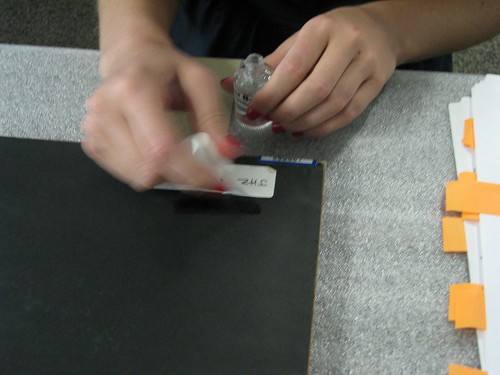By Jasper Collier
Last year, John and Diane Zentay donated more than 50 19th century prints, maps, and other images to the growing artifact collection at President Lincoln’s Cottage. Many of the prints were created by such noted artists as Charles Magnus, E.G. Arnold, and John Bachmann; pioneers of the color lithography medium. Visitors to the Cottage can view several of these beautiful and well preserved lithographs in the corridors and the “Lincoln’s Toughest Decisions” room of the Robert H. Smith Visitor Education Center. The prints will be displayed in rotation.
Recently, the staff at President Lincoln’s Cottage undertook the task of formally integrating the prints into the National Trust Collections database. This involved updating the historical information for each object record, inspecting and updating condition reports for each print, and finally applying the accession number to each object. Each print has to be marked with a durable yet removable label.
In order to carry out the project, the site purchased a new collections numbering kit through the Northern States Conservation Center. The Collections Interns took on the task of testing several different labeling paints, pencils, and acrylics on a black paper strip similar to the delicate paper backing on most of the Zentay Collection prints. After these tests, the Collections Interns pinpointed the ideal combination of materials that should be used to proceed with numbering the prints, and began the meticulous process of applying numbers.
The Process:
1) Each image was carefully unpacked and examined for flaws and imperfections on both the print and the frame. The condition was then recorded in the print’s object record.
2) A thin layer of clear acrylic base was applied to a small section of the print’s paper backing and was left to dry for several minutes.
3) Once the base was dry, the National Trust (NT) accession number was applied using a refillable felt tip paint marker filled with white acrylic paint.
4) The number was then left to dry for another few minutes before a top coat of clear acrylic was applied to seal the label.
5) When the top coat was dry, the image was repackaged and carefully placed back in collections storage.
In the future, if the label must be removed for any reason, the acrylic base and paint are both soluble in a naphthalene solution. If care is taken during the removal process, the label should lift with little or no damage to the paper backing or the image.


